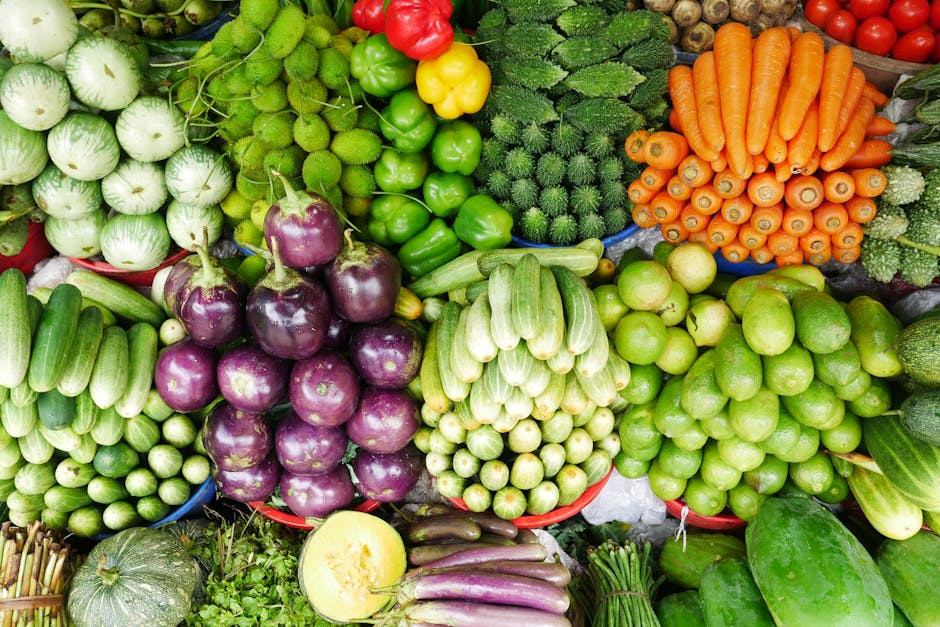What Are Sustainable Dining Practices & Why They Matter
Sustainable dining practices are actions restaurants take to reduce their environmental impact while maintaining economic viability. These practices range from reducing food waste to conserving energy and water.
For restaurants looking to implement sustainable dining practices right away, here are the most effective approaches:
- Source locally and seasonally – Reduce carbon footprint from transportation
- Minimize food waste – Track inventory, donate excess, compost scraps
- Reduce energy and water usage – Install efficient equipment and fixtures
- Eliminate single-use plastics – Switch to reusable or compostable alternatives
- Offer plant-forward menu options – Reduce environmental impact of meat production
- Engage staff and customers – Build a culture of sustainability
The restaurant industry has a significant environmental footprint, with food waste alone costing restaurants $25 billion in lost revenue annually. Meanwhile, 83% of consumers wish they could patronize restaurants with more environmentally friendly practices.
“Small steps can have a big impact,” notes a sustainability expert in the restaurant industry. “You don’t need to overhaul your entire operation at once. Start with one or two practices and build from there.”
For food service businesses, sustainability isn’t just good for the planet—it’s increasingly good for business. As diners become more environmentally conscious, restaurants that adopt green practices can attract new customers, build loyalty, and even reduce operational costs through greater efficiency.
Whether you’re a restaurant owner looking to make your business more sustainable or a diner seeking eco-friendly establishments, this guide will walk you through practical steps to reduce environmental impact without sacrificing quality or profitability.

Sustainable dining practices terms simplified:
– farm-to-table dining experiences
– food sustainability trends
Why Sustainable Dining Practices Matter
The restaurant industry leaves quite a footprint on our planet. Food systems contribute about 34% of global greenhouse gas emissions, according to research from the Harvard School of Public Health. When you think about it, restaurants touch every part of the environmental cycle—from the energy that powers their kitchens to the water that washes their dishes, and from the food waste they generate to the miles their ingredients travel.
Looking at the full picture of restaurant operations, the carbon footprint adds up faster than you might expect. Take meat production, for instance—it’s a major contributor to greenhouse gases, water pollution, and the clearing of forests for grazing land.

Beyond helping the environment, there’s a compelling business reason to accept sustainable dining practices. Today’s diners are increasingly voting with their wallets for restaurants that care about their impact:
- 34% of consumers will happily pay more for sustainable options
- Nearly half (49%) consider eco-friendly packaging when deciding where to eat
- More than half (54%) prefer restaurants that actively reduce food waste
- A whopping 83% wish they could find more environmentally friendly restaurants
As one New York-based restaurant consultant put it: “Sustainability in restaurants is far from a fad and here to stay. The restaurants that will thrive in the coming decade are those that accept sustainable practices as core to their business model.”
The Business Case for Sustainable Dining Practices
While helping the planet feels good, the financial benefits of going green are just as compelling. Restaurants that accept sustainable dining practices often find:
Lower monthly bills through smart energy choices. Energy-efficient appliances can slash consumption by up to 75%, making a noticeable difference in utility costs. Similarly, water-saving fixtures keep that water bill in check.
Healthier food budgets through waste reduction. Restaurants carefully tracking and minimizing food waste often save thousands each year. Plus, using what’s in season usually means better prices on fresher ingredients.
More loyal customers who return again and again. 34% of diners willing to pay more for sustainability? They’re often the most loyal patrons, with 83% actively seeking out greener dining options.
Standing out from the crowd in competitive markets. In places like New York City where diners have endless choices, your sustainability commitment can be what makes you memorable.
Happier staff who stick around longer. Today’s restaurant workers, especially younger team members, prefer employers whose values align with their own.
One Manhattan restaurant owner shared their success story with us: “Since implementing our sustainability program, we’ve seen a 15% reduction in operational costs and a 20% increase in repeat customers. The initial investment paid for itself within the first year.”
The numbers don’t lie—going green isn’t just good for the earth; it’s becoming essential for restaurants that want to thrive in today’s conscious consumer landscape.
Source Locally & Seasonally
One of the most powerful sustainable dining practices you can adopt is sourcing ingredients locally and seasonally. Think about it: every time you choose local produce, you’re slashing those “food miles” – the distance your ingredients travel from farm to plate – and significantly reducing transportation emissions in the process.

The benefits of going local extend far beyond just environmental impact. When you source locally, you’re getting fresher ingredients that typically pack more flavor and nutrition. There’s simply no comparison between a tomato picked yesterday from a nearby farm and one that’s traveled across the country in a refrigerated truck.
You’re also supporting local economies by keeping your dollars in the community. As one chef at a beloved New York farm-to-table restaurant told us with a smile, “There’s nothing better than fresh, in-season produce. When you design your menu around what’s available locally, you’re forced to be creative and your dishes taste better for it.”
The reduced carbon footprint is substantial – fewer miles traveled means fewer emissions produced. Plus, local sourcing often leads to unique menu offerings that set your restaurant apart from the competition. Those regional specialties can become signature items that customers can’t find anywhere else.
Seasonal menus that change throughout the year not only lighten your environmental impact but create a sense of anticipation and excitement among your diners. They have something new to look forward to with each visit!
Ready to implement this practice? Start by developing relationships with local farmers – spend a Saturday morning at farmers’ markets, join regional food networks, or simply reach out directly to producers in your area. Create flexible, seasonal menus that can adapt to what’s available, perhaps keeping a few beloved staples while rotating seasonal specials.
Don’t forget to educate your staff and customers about why you’re making these choices. People love stories, and the story of where their food comes from can improve their dining experience. Even in dense urban environments like New York City, some restaurants are finding creative ways to grow herbs and select vegetables on rooftops or in small garden spaces.
For a deeper dive into the impact of local sourcing, check out Why Locally Sourced Ingredients Make a Difference.
Building a Regional Supply Network
Creating a robust regional supply network doesn’t happen overnight, but it’s essential for implementing sustainable dining practices that stand the test of time.
Many successful restaurants are forming direct partnerships with Community Supported Agriculture (CSA) programs, ensuring they receive a steady supply of seasonal produce while providing farmers with guaranteed income – a win-win relationship that builds food system resilience.
For ingredients that simply can’t be sourced locally – like coffee and tea – forward-thinking restaurants are choosing fair-trade certified options that ensure ethical production practices and fair compensation for farmers halfway around the world.
Restaurants in coastal areas like New York are making waves by partnering with sustainable fisheries that use responsible harvesting methods. The Marine Stewardship Council (MSC) certification has become a valuable tool for identifying truly sustainable seafood options that won’t deplete our oceans.
“We started with just one local farmer supplying our tomatoes,” shared a restaurant manager in Brooklyn. “Now, five years later, we source over 80% of our ingredients from within a 100-mile radius. It didn’t happen overnight, but the incremental approach worked for us.”
If you’re just beginning this journey, start small by changing a single ingredient and scaling up over time. Consider joining local food hubs that connect restaurants with multiple producers, saving you the legwork of finding each supplier individually. Industry events focused on sustainable food systems can be goldmines for making connections.
For smaller establishments, consider cooperative purchasing with other restaurants to meet minimum order requirements from suppliers. And don’t forget to check supplier certifications like ISO14001 and ISO50001 to verify their environmental commitments align with yours.
Building a regional supply network takes patience and persistence, but the payoff – for your business, your community, and our planet – makes it well worth the effort.
Minimize Food Waste
Let’s talk about the elephant in the restaurant room: food waste. It’s a massive challenge for our industry, with U.S. restaurants tossing out a staggering 11.4 million tons of food each year. That translates to about $25 billion literally thrown in the trash. Ouch.
But here’s the good news – tackling this waste isn’t just good for Mother Earth, it’s fantastic for your restaurant’s bank account too. When you implement sustainable dining practices that reduce what ends up in the bin, everybody wins.

Sustainable Dining Practices for Waste Reduction
Smart inventory management can transform your kitchen’s efficiency. Modern tracking systems don’t just count what you have – they learn your patterns and help predict exactly what you’ll need. No more Monday morning surprises when you find you’ve ordered twice the tomatoes you can possibly use.
The FIFO method (First In, First Out) might sound like a tech startup, but it’s actually a simple way to organize your storage. Those mushrooms that arrived last Tuesday? They should be leaving your kitchen before the ones that came in Friday. Your staff might need some gentle reminders at first, but once it becomes habit, spoilage drops dramatically.
Speaking of staff, proper training makes all the difference. “We reduced our waste by 30% just by teaching everyone the right storage temperatures for different ingredients,” shared a chef from a popular Brooklyn bistro. “Who knew strawberries last longer when you don’t wash them until you’re ready to use them?”
Portion control is another powerful tool. A Manhattan restaurant owner told me, “We realized our pasta portions were coming back half-eaten, so we reduced them by 25% and offered free refills instead. Almost nobody asks for seconds, our food costs dropped, and customers appreciate not feeling stuffed.”
Getting creative with “food scraps” can transform your kitchen. Those carrot tops and onion skins? That’s not trash – that’s tomorrow’s vegetable stock. Stale bread becomes amazing croutons. Overripe bananas transform into delicious bread pudding. One creative chef in Queens even makes “compost cookies” from bits and pieces that would otherwise be tossed.
Donation programs can help feed your community instead of your dumpster. Organizations like City Harvest in New York will pick up your excess food and distribute it to those in need. “The first time we donated instead of discarded, it changed how our whole team felt about food prep,” one restaurant manager shared. “Now we’re much more mindful about what we order and how we use it.”
For what truly can’t be saved, composting closes the loop. Many cities offer commercial composting programs, turning food scraps into rich soil for local farms – some of which might grow the very ingredients you’ll use next season.
Several excellent tools can help you track and reduce waste:
- Lean Path: Offers digital monitoring with powerful analytics to identify waste patterns
- Winnow: Uses AI to help kitchens understand exactly what’s being tossed and why
- EPA Food Waste Assessment Tools: Free calculators that make measuring waste straightforward
Simple changes can yield surprising results. A Manhattan cafeteria eliminated trays and watched food waste plummet by 40%. “People take less when they can only carry what fits in their hands,” the owner explained. “It’s such a simple change but made a huge difference.”
Perhaps the most eye-opening approach is conducting a waste audit. It’s not glamorous – you’re literally sorting through trash – but restaurants consistently report that this hands-on experience transforms how their teams think about food. “Seeing a pile of perfectly good lettuce that was tossed because someone over-prepped makes an impression no lecture ever could,” noted one New York chef.
By tackling food waste head-on, restaurants aren’t just saving money – they’re becoming part of the solution to a global challenge while practicing truly sustainable dining practices.
Slash Energy & Water Use
Let’s face it – restaurants are energy and water hogs. From blazing stoves to constantly running dishwashers, the average eatery consumes resources at a rate that would make most homeowners faint. But here’s the good news: implementing sustainable dining practices in this area can dramatically cut both your environmental impact and your utility bills.

When Chef Maria Rodriguez switched her Manhattan bistro to LED lighting, she wasn’t expecting miracles. “I was shocked when our first electricity bill came in,” she tells us with a laugh. “We cut our lighting costs by almost 70% overnight.” This simple change takes advantage of technology that uses up to 75% less energy than traditional bulbs while lasting 25 times longer, according to the U.S. Department of Energy.
But lighting is just the beginning of the energy-saving journey. ENERGY STAR appliances might cost more upfront, but they typically reduce energy consumption by 20-30% compared to standard models. For a busy kitchen running equipment all day, those savings add up quickly.
Smart restaurants are also installing motion sensors in less-trafficked areas like storage rooms and bathrooms. “Our staff kept forgetting to turn off the walk-in cooler light,” explains one Brooklyn restaurant owner. “Now it happens automatically, and we’ve seen real savings.”
Water conservation deserves equal attention in your sustainability plan. Low-flow fixtures in kitchens and bathrooms can dramatically reduce water usage without affecting performance. The math is compelling – a standard pre-rinse spray valve uses about 4-5 gallons per minute, while efficient models use just 1.6 gallons or less.
Don’t underestimate the impact of maintenance, either. A dripping faucet might seem minor, but it can waste over 3,000 gallons annually. Clean refrigerator coils, tight door seals, and regular HVAC maintenance all contribute to optimal efficiency.
“After upgrading to all ENERGY STAR equipment and LED lighting, our utility bills dropped by 30%,” shares a restaurant owner in Brooklyn. “The investment paid for itself in under two years.”
Creating an Efficient Utility Plan
Taking your sustainable dining practices to the next level requires a comprehensive approach. Start with professional energy and water audits to identify your biggest resource drains and opportunities for improvement. Many utility companies offer these services for free or at reduced costs.
HVAC scheduling is another powerful tool in your sustainability arsenal. Why heat or cool your restaurant to perfect comfort when nobody’s there? Programmable thermostats can automatically adjust temperatures during closed hours, saving significant energy.
Many forward-thinking restaurants are exploring renewable energy options. Solar panels are becoming more affordable and efficient each year, and even if your building can’t accommodate them, you can purchase renewable energy credits to offset your conventional energy use.
Water conservation can extend beyond your building’s walls. Rainwater capture systems collect precipitation that can later be used for landscaping or toilet flushing. This approach is particularly valuable in drought-prone regions but makes environmental sense everywhere.
None of these systems work without people, though. Staff training on resource conservation is essential. Create clear protocols for when equipment should be turned off and post reminders in strategic locations. Some restaurants have even implemented friendly competitions between shifts to see who can use the least resources.
Finally, what gets measured gets managed. Track your utility usage carefully to see the impact of your changes and identify areas for further improvement. Many restaurants are surprised to find which parts of their operations are the most resource-intensive.
Check with your local utility companies for rebates and incentives that can help offset the cost of efficiency upgrades. The Portland Water Bureau, for example, provides free high-efficiency pre-rinse sprayers and faucet aerators to restaurants, and similar programs exist in many cities, including New York.
With thoughtful planning and consistent implementation, your restaurant can slash its energy and water footprint while boosting your bottom line – a win-win for the planet and your business.
Rethink Packaging & Plastics
The explosion of takeout and delivery has thrust packaging into the spotlight for restaurants committed to sustainable dining practices. Those disposable containers and single-use plastics that briefly carry our food home are creating lasting environmental problems in landfills and oceans.

The EPA offers clear guidance on food service packaging, with a straightforward hierarchy that prioritizes our planet’s health:
1. Reusable items (the gold standard)
2. Certified commercially compostable options (solid second choice)
3. Certified recyclable materials (better than nothing)
“When we switched to sugarcane-based containers, we worried about customer pushback on the different look,” admits a Manhattan restaurant owner. “Instead, our regulars started telling us they were reusing them in their home gardens after they decompose. Sometimes doing good actually strengthens your connection with customers.”
The packaging landscape has evolved dramatically, with innovative materials replacing traditional plastics. Bagasse (made from sugarcane fiber) works beautifully for hot foods and soups, while PLA (derived from corn starch) makes an excellent cold food container. Both break down in commercial composting facilities, though they require proper disposal to fulfill their eco-promise.
| Material | Compostability | Recyclability | Best Uses |
|---|---|---|---|
| Bagasse (sugarcane) | Excellent | Poor | Hot foods, soups |
| PLA (corn-based plastic) | Good (commercial composting only) | Poor | Cold foods, salads |
| Recycled paper | Good | Good | Dry foods, bakery items |
| Aluminum | Poor | Excellent | Takeout containers |
| Traditional plastic | Poor | Variable | Being phased out |
Taking action doesn’t require an overnight change. Start by auditing your current packaging to identify the worst offenders. Making utensils and napkins available only by request can slash waste by 30-40% with minimal effort. Choose right-sized packaging that fits the food without excessive materials, and clearly label everything so customers know whether to compost or recycle.
Don’t forget to look upstream too. Work with suppliers to minimize the packaging that comes into your restaurant, and seek out vendors who take back and reuse shipping containers.
For deeper guidance on choosing the right materials, the EPA offers a comprehensive resource: Identifying Sustainable Food Service Ware | US EPA
Sustainable Dining Practices for Takeout & Delivery
The journey to sustainability extends beyond the container to the entire delivery ecosystem. Smart restaurants are making sustainable dining practices part of their delivery DNA.
“Our ‘sustainability surcharge’ of 50 cents on deliveries funds carbon offsets for our delivery footprint,” explains a Brooklyn restaurant manager. “We expected complaints, but customers have been overwhelmingly supportive – many even round up their contribution to a full dollar.”
Making silverware, napkins, and condiments opt-in rather than automatic is a simple change with outsized impact. Most delivery apps now include this feature, making implementation painless. When silverware isn’t needed (most home deliveries), it doesn’t become waste.
Transportation itself offers substantial room for improvement. Route optimization software can reduce delivery mileage by up to 20%, directly cutting both costs and carbon footprint. In dense urban areas like New York City, bicycle couriers can replace gas-guzzling vehicles for short distances, while electric vehicles make longer routes greener.
Some forward-thinking establishments are partnering with delivery services committed to sustainability through carbon offset programs or electric vehicle fleets. These partnerships amplify your environmental commitment while simplifying operations.
The packaging revolution is well underway – from compostable containers to optimized delivery routes, restaurants are finding that sustainable choices can please both customers and the planet while protecting the bottom line.
Power Up Plant-Forward Menus
Creating plant-forward menus is one of the most powerful sustainable dining practices a restaurant can accept. When you think about environmental impact, plant-based foods simply tread more lightly on our planet than animal products, especially beef and dairy.

The numbers speak volumes – the global plant-based food market is expected to reach a staggering $162 billion by 2030. But here’s what’s really interesting: many of these consumers aren’t strictly vegetarian or vegan. They’re “flexitarians” – everyday people looking to cut back on meat for both environmental and health reasons.
“When we first added more plant-based options, we worried our regular customers might push back,” confessed a chef from a busy New York restaurant. “Instead, these dishes became some of our most popular items, especially with younger diners who care deeply about their environmental footprint.”
You don’t need to transform into a fully vegetarian establishment overnight. Start by offering a range of plant-based options throughout your menu – not just relegated to the sides section or as a token veggie burger. Make these dishes just as enticing and beautifully presented as your meat-centric offerings.
Meatless Mondays provide an excellent starting point if you’re new to plant-forward cuisine. This global movement encourages skipping meat just one day a week – a small change that can make a significant difference when adopted widely.
For those concerned about losing meat-loving customers, consider blended options as a bridge. Mixing mushrooms or other plant proteins with ground meat creates burgers and other dishes with substantially lower environmental impact while maintaining familiar flavors and textures.
Visibility matters too. Rather than hiding plant-based dishes in a special section that might be overlooked, highlight these items prominently on your menu. Your marketing can emphasize both the environmental benefits and the delicious flavors these dishes offer.
Restaurants serious about their climate impact might consider joining the Cool Food Pledge, an initiative that helps track and reduce the climate footprint of the food they serve. It’s a tangible way to demonstrate your commitment to sustainable dining.
Healthy & Sustainable Menu Engineering
Effective menu engineering marries sustainability with nutrition and profitability – a win-win-win approach to restaurant management.
Consider strategic protein swaps that benefit both diners and the environment. Replace resource-intensive proteins with more sustainable options – perhaps featuring locally caught fish instead of imported varieties, or showcasing plant proteins like lentils, beans, and innovative new meat alternatives.
Don’t overlook the opportunity to accept imperfect produce. Those slightly oddly-shaped vegetables and fruits that grocery stores often reject? They’re perfectly delicious and nutritious – and using them in your dishes helps reduce food waste while often saving on ingredient costs.
Smart restaurants are also focusing on nutrient density – ingredients that deliver maximum nutrition with minimal environmental impact. These foods give diners more nutritional bang for their environmental buck.
“Menu engineering isn’t just about profitability,” notes a restaurant consultant who works with several New York establishments. “It’s about creating a menu that aligns with your values while meeting customer expectations. When done right, sustainable menu items can become your most profitable offerings.”
Transparency builds trust. Clearly label menu items with information about sourcing, allergens, and environmental impact to help diners make informed choices. Today’s consumers appreciate knowing the story behind their food.
Finally, price strategically. Set prices that reflect the true cost of sustainable ingredients while remaining competitive. Many customers are willing to pay a small premium for food that aligns with their values – especially when they can taste the quality difference.
For more insights on evolving food preferences, check out our guide to Food Sustainability Trends.
Engage Staff & Diners
Turning sustainable dining practices into reality isn’t just about implementing systems—it’s about winning hearts and minds. Without genuine buy-in from your team and customers, even the most ambitious green initiatives can wither on the vine.

When it comes to your staff, sustainability needs to feel personal, not like another top-down mandate. “We initially struggled with consistent composting,” admits a café owner in Brooklyn. “Everything changed when we organized a field trip to the composting facility. Seeing the actual impact transformed theoretical knowledge into emotional commitment.”
Effective staff engagement begins with comprehensive training that addresses not just the how but the why behind sustainable practices. Creating dedicated green teams can spark healthy competition and innovation—one Manhattan restaurant rewards quarterly sustainability champions with bonuses for ideas that measurably reduce waste or energy use.
“The best sustainability innovations often come from line staff,” notes a restaurant consultant. “They’re the ones handling ingredients and interacting with customers daily. When a dishwasher suggested we install a simple water collection system to reuse rinse water for mopping floors, we saved thousands of gallons annually.”
For customers, sustainability should feel like an invitation, not a lecture. Clear, warm signage that celebrates your journey rather than preaches can make a world of difference. A Queens restaurant owner found that replacing their stern “Please Recycle” signs with friendly “Join Our Sustainability Journey” messaging dramatically improved customer participation.
Social media storytelling offers a powerful avenue for sharing your green efforts. Rather than generic posts about “going green,” share specific stories—introduce followers to the local farmer who grows your heirloom tomatoes or document your journey toward zero waste with honest updates about successes and challenges.
Many restaurants find success with loyalty rewards that encourage sustainable choices. A café in the West Village offers the tenth drink free when customers bring reusable cups, while a popular brunch spot gives a 5% discount to diners who arrive by bicycle or public transit.
Building a Culture of Sustainable Dining Practices
Creating a lasting culture of sustainability means moving beyond isolated initiatives to weave environmental consciousness into your restaurant’s DNA.
“Our sustainability mission statement hangs in the staff room, but more importantly, it guides every decision we make,” shares a chef-owner in Tribeca. Her restaurants incorporate sustainability discussions into daily pre-shift meetings, celebrating small wins and troubleshooting challenges together.
Employee incentive programs can powerfully reinforce this culture. One restaurant group gives each employee eight paid hours annually to volunteer with environmental organizations. “It costs us in the short term,” the owner acknowledges, “but the boost in morale and personal investment in our mission pays dividends in retention and enthusiasm.”
Community engagement further strengthens this culture. Restaurant teams that participate together in beach clean-ups or community garden projects build camaraderie while reinforcing environmental values. “The Saturday we spent planting trees did more for team bonding than any corporate retreat could have,” notes a restaurant manager whose staff volunteers quarterly.
Success stories deserve celebration—not just externally but internally. Tracking and sharing achievements like “We’ve diverted 5,000 pounds of food waste from landfills this quarter” gives concrete form to abstract efforts. One thoughtful restaurant even translates metrics into relatable terms: “Our energy savings this year could power 15 New York apartments for a month!”
By fostering genuine engagement among both staff and diners, restaurants create a virtuous cycle where sustainable practices become not just policies but shared values. As one chef put it, “When both your team and your customers become sustainability ambassadors, that’s when real change happens.”
Verify & Communicate Transparency
When “green” claims are everywhere, proving and openly sharing your sustainable dining practices is crucial for building trust with today’s knowledgeable diners. After all, actions speak louder than words, especially when it comes to sustainability.

When I visited a small farm-to-table restaurant in Brooklyn last month, I was impressed by the certification plaques proudly displayed near the entrance. The owner told me, “These aren’t just wall decorations—they’re proof of our commitment and hard work.”
Restaurants serious about sustainability can pursue several respected certifications. The Green Restaurant Association (GRA) evaluates restaurants based on water efficiency, waste reduction, sustainable food sourcing, energy use, disposables, and chemical usage. For seafood-focused establishments, the Marine Stewardship Council (MSC) certification validates sustainable fishing practices.
Other valuable credentials include USDA Organic for certified organic ingredients, ENERGY STAR for efficient equipment, and TRUE Zero Waste for restaurants diverting at least 90% of waste from landfills. The B Corp Certification looks at overall social and environmental performance, while earning a Michelin Green Star recognizes exceptional sustainable gastronomy.
But earning certifications is only half the equation—you need to communicate these efforts effectively. Smart restaurants are weaving sustainability information throughout the dining experience. This includes thoughtful menu labeling with icons or descriptions highlighting sustainable ingredients, and staff training so servers can confidently answer questions about your green initiatives.
Your digital presence should reflect these commitments too. Create dedicated sections on your website and social media that detail your sustainable journey. Within your restaurant, use subtle signage to educate customers while they dine.
Perhaps most importantly, maintain a strict no-greenwashing policy. “We found that being transparent about our struggles actually built more trust with customers than only highlighting our successes,” shared a restaurant owner in Brooklyn. “People appreciate authenticity and the recognition that sustainability is a journey, not a destination.”
Sustainable Dining: More Than a Trend
Turning Accountability into Advantage
Forward-thinking restaurants are changing accountability from an obligation into a competitive edge. Some have created public sustainability dashboards on their websites, displaying real-time metrics of energy use, water consumption, and waste diversion. Others publish annual impact reports documenting their sustainability goals, achievements, and areas needing improvement.
Third-party audits provide independent verification of sustainability claims, adding another layer of credibility. Many restaurants are also developing case studies highlighting specific initiatives and their measured impact, like how switching to LED lighting reduced their carbon footprint by a specific percentage.
Some establishments take leadership a step further by sharing best practices with other restaurants, recognizing that raising industry standards benefits everyone. As one chef told me, “Sustainability isn’t proprietary—we’re all in this together.”

The Michelin Green Star, introduced in 2020, has quickly become a coveted recognition. A New York City chef whose restaurant earned this distinction shared with me: “The Green Star has been transformative for our business. It attracts not only environmentally conscious diners but also top talent who want to work somewhere that aligns with their values.”
When restaurants commit to genuine transparency and accountability, they don’t just build trust—they create passionate advocates among both customers and staff. In today’s competitive dining landscape, that authentic commitment to sustainability can be the difference between a restaurant that survives and one that truly thrives.
Frequently Asked Questions about Sustainable Dining Practices
How can small restaurants afford sustainability upgrades?
Let’s face it—money talks, especially for small restaurant owners watching every penny. But here’s the good news: implementing sustainable dining practices doesn’t have to break the bank. In fact, many green initiatives actually fatten your wallet over time.
“We started with zero-cost changes like adjusting portion sizes and implementing better inventory tracking,” shares Maria, who owns a cozy bistro in Queens. “Those simple tweaks reduced our food waste by 30% in the first month alone.”
Smart restaurant owners typically begin with the low-hanging fruit. Before investing in expensive equipment, look at operational changes that cost nothing but save plenty: training staff to turn off lights, implementing first-in-first-out inventory systems, or offering water only upon request.
When you’re ready to invest, check what your utility company might offer. Many provide substantial rebates for energy-efficient upgrades—sometimes covering up to 70% of the cost. One Brooklyn café owner told me, “Our utility company basically paid for our LED lighting conversion. The remaining cost we recouped through savings in just nine months.”
Consider creating a sustainability roadmap, tackling one project each quarter. The savings from each completed initiative can help fund the next one, creating a snowball effect of both environmental and financial benefits.
Which certifications add the most credibility?
Navigating the alphabet soup of sustainability certifications can feel overwhelming. Which ones actually matter to your customers and are worth the effort?
The Green Restaurant Association (GRA) certification tends to provide the most comprehensive validation, covering everything from water conservation to sustainable food sourcing. It’s widely recognized and respected by environmentally conscious diners.
For seafood-focused establishments, the Marine Stewardship Council (MSC) certification carries significant weight. “When we added the MSC logo to our menu, we saw an immediate increase in orders for our sustainable seafood dishes,” notes a Manhattan seafood restaurant manager.
If organic ingredients feature prominently in your concept, the USDA Organic certification remains the gold standard that consumers recognize and trust.
The emerging star in the certification world is the Michelin Green Star, which specifically recognizes restaurants at the forefront of sustainable gastronomy. Though difficult to achieve, it’s becoming the ultimate badge of honor for eco-conscious fine dining establishments.
Rather than chasing multiple certifications simultaneously, focus on one that aligns with your primary sustainability goals and customer expectations. Master that, then consider expanding your certification portfolio as your sustainability program matures.
What is the quickest win for reducing carbon footprint?
Want to make an immediate dent in your restaurant’s carbon footprint? Start with food waste tracking. Restaurants typically waste 4-10% of food purchased before it even reaches customers—a direct hit to both the planet and your profit margin.
“We implemented a simple waste tracking system using a digital scale and logbook,” explains a chef from a popular Manhattan eatery. “Within two weeks, we identified that we were prepping way too much quinoa and throwing half of it away daily. Just fixing that one issue saved us hundreds of dollars monthly and significantly reduced our waste.”
For immediate impact with minimal effort, adjust your thermostat settings by just 1-2 degrees. This small change can reduce energy consumption by 5-10% with zero investment required. Similarly, switching to LED lighting provides dramatic energy savings—up to 75% compared to conventional bulbs—with a relatively quick payback period.
Menu engineering offers another quick win. By highlighting and promoting your most environmentally friendly dishes (typically plant-based options), you can shift customer ordering patterns toward lower-carbon choices. One Brooklyn restaurant saw orders of their plant-based burger increase by 40% simply by moving it to a more prominent position on the menu and adding a small “Earth-Friendly Choice” icon beside it.
The most effective carbon-cutting strategies often align perfectly with cost-saving opportunities. That’s the beauty of sustainable dining practices—what’s good for the planet is typically good for your bottom line too.
Conclusion
Let’s be honest—sustainable dining practices aren’t just a nice-to-have anymore. They’ve become essential for restaurants that want to stay relevant and profitable in a world where environmental concerns are top of mind for many diners.
Throughout this guide, we’ve explored the many ways restaurants can reduce their environmental footprint: sourcing ingredients from local farmers, cutting down on food waste, conserving energy and water, ditching single-use plastics, creating delicious plant-forward menu options, and bringing both staff and customers along on the sustainability journey.
What’s particularly encouraging is that sustainability isn’t just good for the planet—it’s good for business too. As one restaurant owner shared with us, “When we first started our sustainability program, we worried about the costs. Three years later, we’ve reduced our operating expenses by 20% and gained a loyal following of customers who specifically seek us out because of our green practices.”
Sustainability isn’t about perfection. It’s about progress. “The biggest mistake I see restaurants make is thinking they need to do everything at once,” explains a sustainability consultant who works with restaurants across New York. “Start with one practice, master it, celebrate that win, then move on to the next.”
The beauty of this approach is that each step builds momentum. That composting program leads to staff getting excited about reducing waste, which leads to more mindful purchasing, which leads to menu innovation—creating a positive cycle of improvement that benefits your bottom line, your team’s morale, and of course, our shared environment.
For diners reading this, your choices matter tremendously. Every time you choose to patronize restaurants that prioritize sustainability, you’re helping shape a more environmentally responsible food system. Ask questions about sourcing, compliment restaurants on their green initiatives, and share your experiences with friends and on social media.
Whether you’re taking your first steps toward sustainability or looking to deepen your existing practices, The Dining Destination is here to support your journey with practical advice, inspiring examples, and the latest trends in sustainable dining.
Sustainable Dining: More Than a Trend
The path to a more sustainable food system isn’t always straightforward, but it’s one worth taking—one meal, one restaurant, one community at a time. We’re honored to be your companion on this delicious, meaningful journey.







